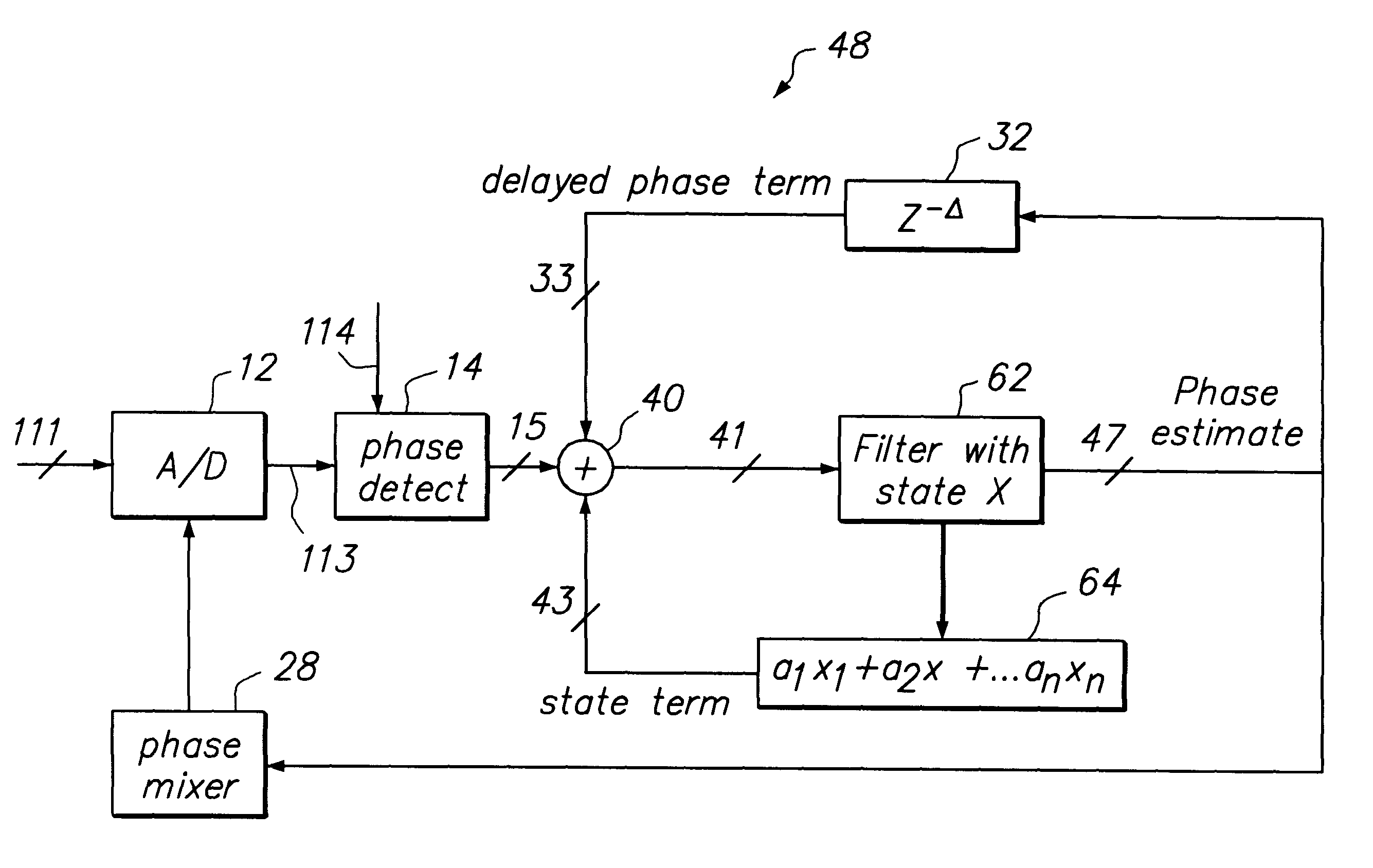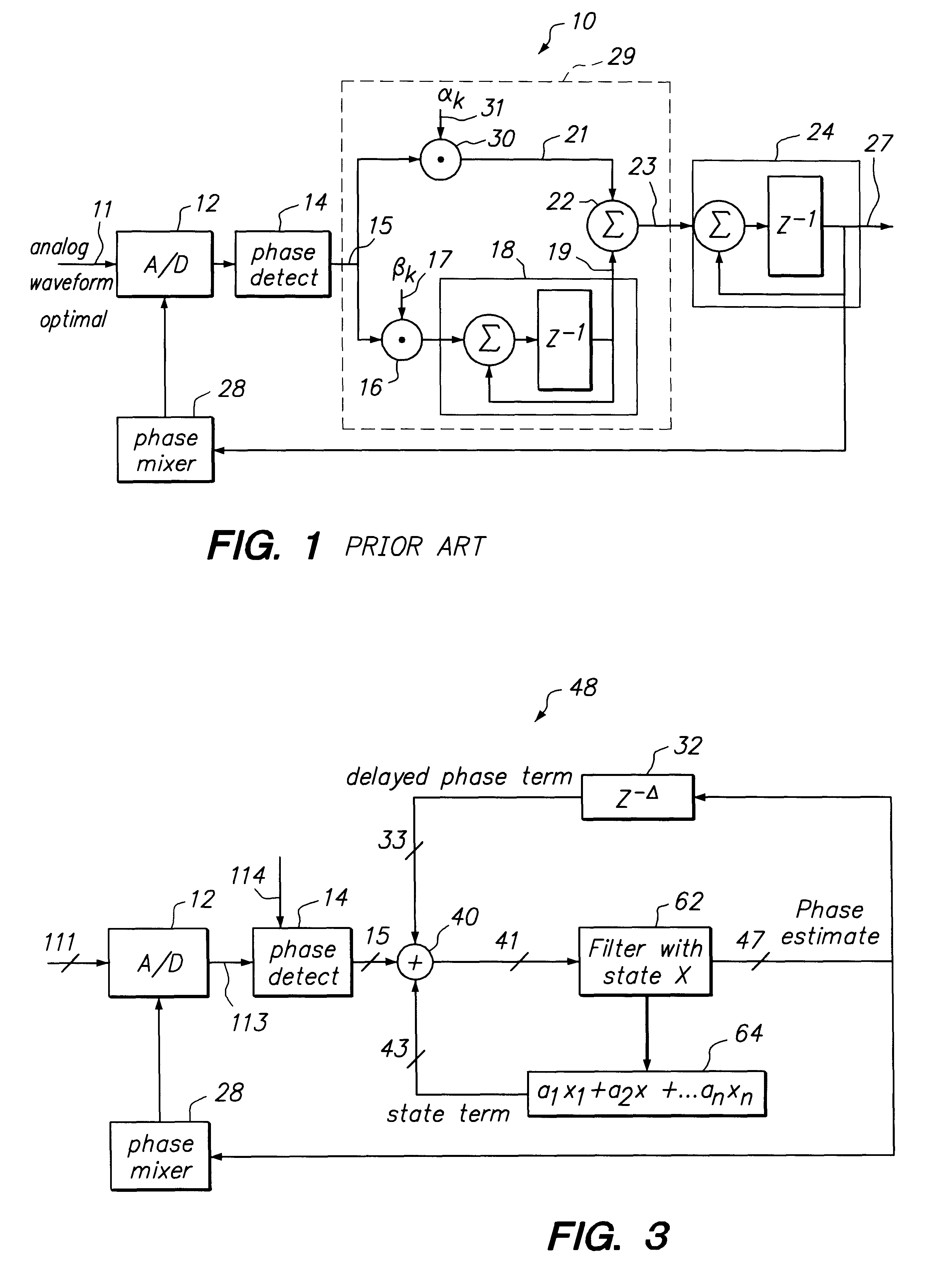Loop latency compensated PLL filter
a filter and loop latency technology, applied in the field of loop latency compensation, can solve the problems of reducing the sensitivity of large bursty noise, affecting the synchronization speed of the synchronizer, and the inherent presence of loop delay in the time synchronizer, so as to reduce the jitter of the pll circuit, reduce the sensitivity to large bursty noise, and improve the synchronization speed
- Summary
- Abstract
- Description
- Claims
- Application Information
AI Technical Summary
Benefits of technology
Problems solved by technology
Method used
Image
Examples
Embodiment Construction
FIG. 2 illustrates a generalized block diagram of a storage media system having a loop latency compensated PLL filter provided according to the principles of this invention. Storage media system 100 comprises a storage media 102 coupled to a media head 104 for reading data signals from storage media 102. A pre-amplifier 106 (Pre-Amp) is coupled to receive read data signal 105 from head 104 and generate a corresponding amplified read data signal 106. A control amplifier (VGA) 108 is coupled to Pre-Amp 106 to receive the amplified data signal 106 and generate an associated corresponding controlled amplified data signal. A low-pass filter 110 is coupled to the VGA 108 to receive the controlled amplified data signal and generate an associated shaped analog data signal 111 having reduced high-frequency components. A low-latency compensated PLL filter 48, as is described in greater detail relative to FIGS. 2 and 3, is coupled to low-pass filter 110 receive as input the shaped analog input...
PUM
| Property | Measurement | Unit |
|---|---|---|
| phase error | aaaaa | aaaaa |
| phase | aaaaa | aaaaa |
| frequency | aaaaa | aaaaa |
Abstract
Description
Claims
Application Information
 Login to View More
Login to View More - R&D
- Intellectual Property
- Life Sciences
- Materials
- Tech Scout
- Unparalleled Data Quality
- Higher Quality Content
- 60% Fewer Hallucinations
Browse by: Latest US Patents, China's latest patents, Technical Efficacy Thesaurus, Application Domain, Technology Topic, Popular Technical Reports.
© 2025 PatSnap. All rights reserved.Legal|Privacy policy|Modern Slavery Act Transparency Statement|Sitemap|About US| Contact US: help@patsnap.com



